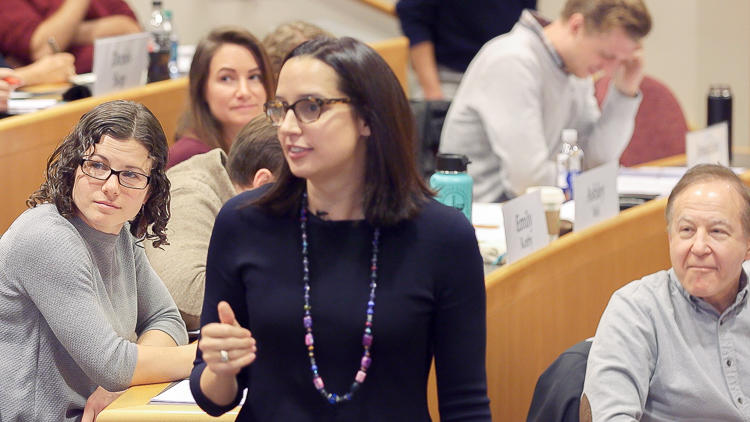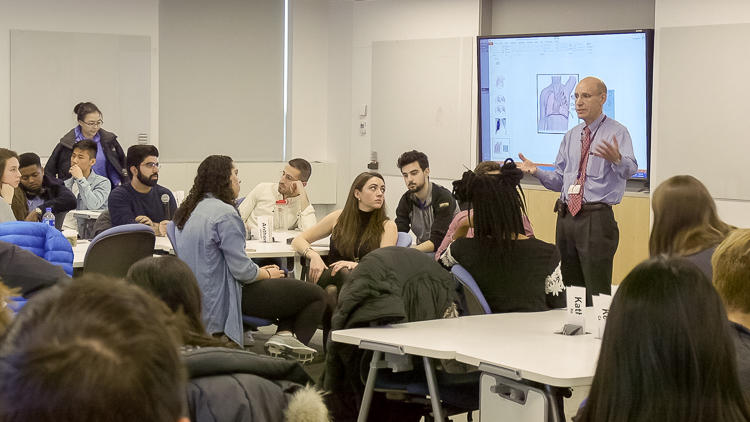When students share incorrect or unclear comments in discussion, instructors must tread carefully. Learning how to provide clear feedback without discouraging participants from contributing altogether can be something of a balancing act. In this video, Todd Rakoff employs a range of careful strategies like follow-up questioning, wait-time, and gentle clarifications when he gives students real-time feedback. Such responses aim to increase students’ learning and deepen their engagement.
Pressing students for accuracy and expanded reasoning
Instructor
Todd Rakoff, Byrne Professor of Administrative Law
Student Group
Graduate
School
Harvard Law School
Course
Legislation & Regulation
Group Size
80 students
Additional Details
First-year requisite
- Use errors and partially correct answers as opportunities to probe further thinking. Instead of immediately moving on from a student who advances an incorrect response, tap into what led them to answer how they did.
- Solicit additional responses to uncover multiple perspectives at once. After hearing a range of opinions, decisively clarify any misunderstandings.
- Be honest. It’s important for students’ understanding and emphasizes that incomplete or wrong answers can be helpful in getting to right ones.
- Consider using a schema to plan and organize questions such as established thinking routines or developmental taxonomies like Bloom’s or SOLO (Structure of the Observed Learning Outcome).
- When instructors’ responses to students are clear, purposeful, and meaningful, students are better able to understand the information intended to be learned and develop metacognitive strategies for future learning (Hattie & Timperley, 2007)
- Wait-time longer than three seconds has been shown to increase the number, length, and accuracy of student responses and facilitate higher cognitive level learning (Tobin, 1987)
- The University of Michigan Center for Research on Learning and Teaching provides advice on “Handling Wrong Answers” and leading students to better answers
- The Center for Innovation in Teaching and Learning at the University of Illinois offers a comprehensive guide of “Questioning Strategies” including pointers on responding to student answers
- An article from the American Journal of Pharmaceutical Education explains best practice strategies for the use of questions in college classrooms
- The Teaching Center at Washington University in St. Louis shares numerous tips for “Asking Questions to Improve Learning”




